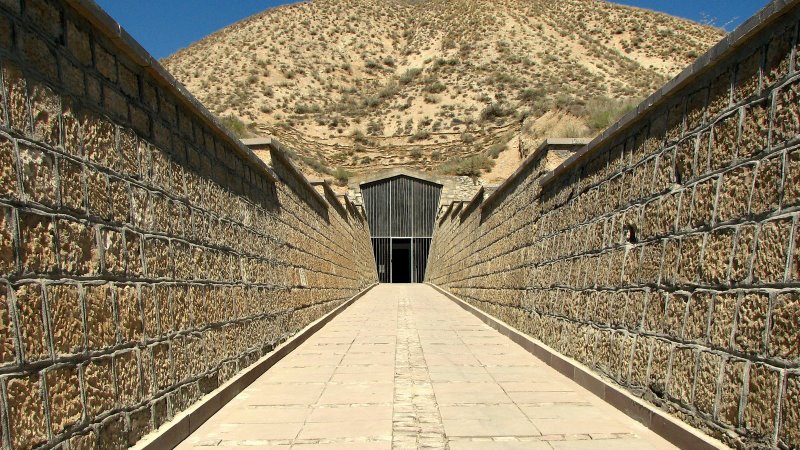
Gordion
It was founded in 1963 near a small village of 500 inhabitants today known as Yassihöyük. Today, a chronological display is presented at the Gordion Museum, each period being represented by characteristic examples. There are works from the Early Bronze Age in the three windows, followed by the works of the Early Phrygian period, which ended with King Midas. Among these works are hand made pottery belonging to the Early Iron Age, iron tools belonging to the Early Phrygian Period and textile production tools are exhibited. Panoramic showcase in the new exhibition hall A typical structure of the destroyed floors dated to 700 years is exhibited. In the rest of the new hall, 6- M.S. The 4th century imported Greek ceramics, Hellenistic and Roman period materials are exhibited. In the last section, they will be able to see the seal and coins recovered at Gordion.
MUSIC DEVELOPMENT
In recent years, the huge increase in the number of visitors to the Gordion Museum has brought new regulations to the agenda. Within these works, a new warehouse of 180 m2, an additional exhibition hall of 150 m2, a laboratory of 30 m2, an information hall with an image of 35 m2 and a new outdoor exhibition area of ??5000 m2 can be listed among the main ones.
The new excavated area Phrygia was planted with cedar, fragrant juniper, boxwood, yellow pollack, walnut and yew trees used in furniture construction. The Roman mosai and the Galatian grave transferred to this new area can be considered as a part of the works.
FRIG ALLIANCES
Around Gordion a wide area BC. The last quarter of the 8th century BC It is covered with tumuli of various metrics dating back to the middle of the 6th century. The tumuli are the tombs of the Phrygian nobles and prominent people. It has a magnificent image of 300 m in diameter and 55 m in height known as the Midas Tumulus within the tumuli. The excavation of the Midas Tumulus was carried out in 1957. At the beginning of the 1960s, the completion of the mastery concrete construction of Turkish engineering was opened to the public.
GALAT TREE
The tomb, which was uncovered as a result of illegal digging in 1954, was later named the “O” tumulus by the Gordion excavation team. At the end of the last half century, the monumental tomb was destroyed by human and nature. With the intervention of the Ministry of Culture, the monument was saved from being destroyed. It was moved to the new garden of the Gordion Museum after numbering stone blocks of the tomb, which were variously illustrated by museum experts. The tomb, which was rebuilt in the garden of the Gordion Museum in 1999, was presented to the public.
MOVABILT MOISTURE
It was discovered during the foundation excavation in Kayabaşı Village of Polatlı District in 1989 BC. III. The Roman period mosaic, dated to the centuries, was reported to the Museum of Anatolian Civilizations by the landlord and the excavation was carried out by the museum the same year. The mosaic, which could not be moved due to the limited space, was moved to the new garden of the Gordion Museum in 1999 and was installed in a semi-enclosed space. 6.60 x 7.70 m. There are animal motifs in the center of the mosaic on the scale, and geometric ornaments around it.
ANTIQUE GORDON PLACE
The capital of the Kingdom of Phrygia, the remains of the famous Gordian city; Near Ankara-Eskişehir highway, near Sakarya (Sangarios) and Porsuk Rivers, 18 km from Polatlı. It is in the northwest (90 km from Ankara).
During the German and American excavations, the finds from here and introduced to various publications; The history of this settlement dates back to the Early Bronze Age (3000 BC).
Gordion, BC Although the Kimmers were destroyed in the early 7th century BC, Between 750 and 700 years. Many finds and tumuli on the site reveal this occupation that continued until the end of the 6th century. Nevertheless, Gordion was ruled by the Persians until Alexander the Great repaired it and gave it back to them (the first half of the 6th century BC).
The famous knot connected by King Gordios was discovered by Alexander the Great in BC. In 333 he died in Gordion where he spent the winter.
In Gordion, the Hellenistic period began after the conquest of Alexander the Great (300-100 BC). Then the Roman period (1st century BC – 4th century AD) then began the Seljuk period (11th-13th centuries AD). All these events happened in Gordion as short as 4000 years.













